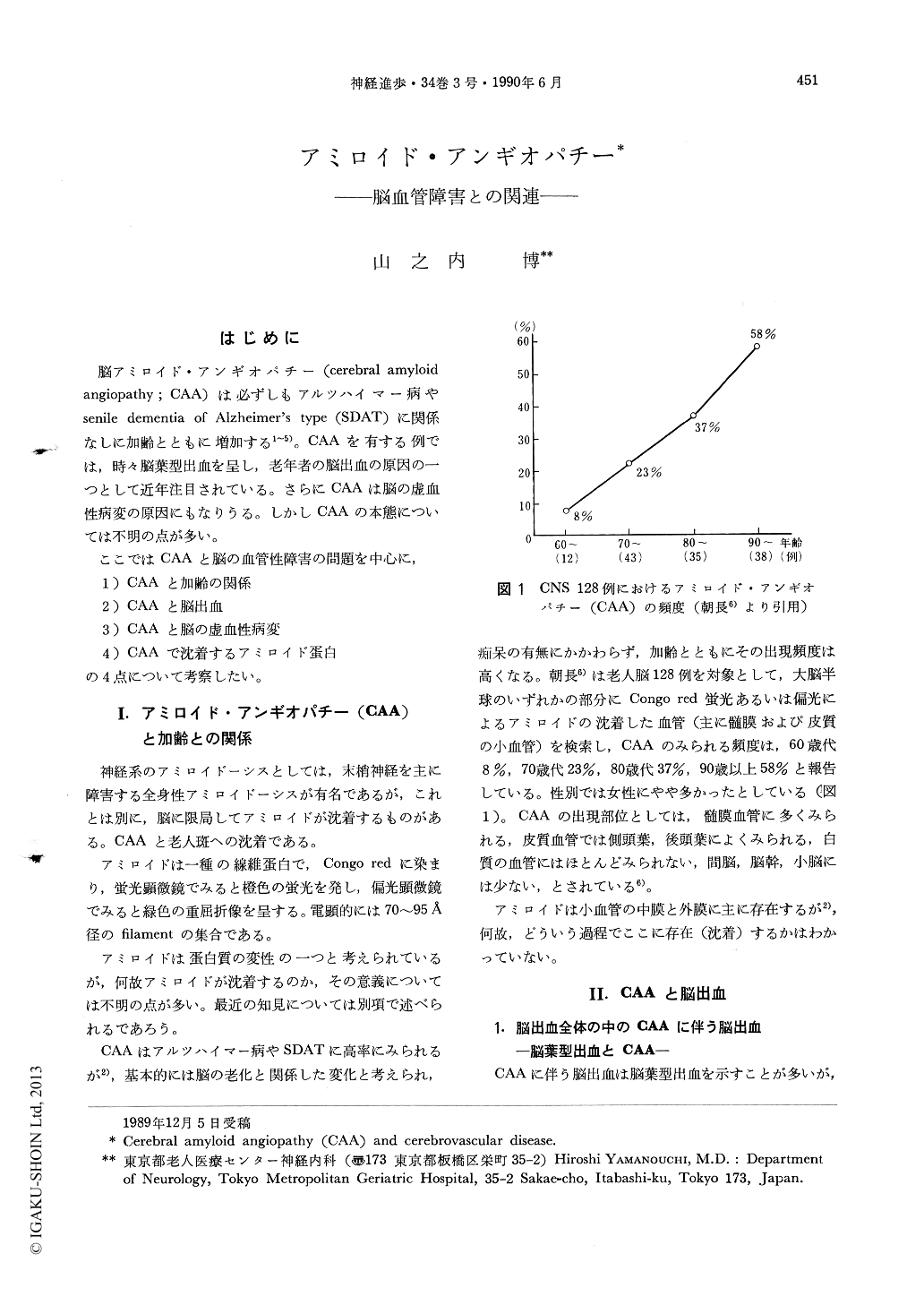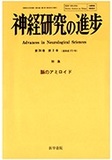Japanese
English
- 有料閲覧
- Abstract 文献概要
- 1ページ目 Look Inside
はじめに
脳アミロイド・アンギオパチー(cerebral amyloid angiopathy;CAA)は必ずしもアルツハイマー病やsenile dementia of Alzheimer's type(SDAT)に関係なしに加齢とともに増加する1~5)。CAAを有する例では,時々脳葉型出血を呈し,老年者の脳出血の原因の一つとして近年注目されている。さらにCAAは脳の虚血性病変の原因にもなりうる。しかしCAAの本態については不明の点が多い。
ここではCAAと脳の血管性障害の問題を中心に,1)CAAと加齢の関係 2)CAAと脳出血 3)CAAと脳の虚血性病変 4)CAAで沈着するアミロイド蛋白の4点について考察したい。
Cerebral amyloid angiopathy (CAA) increases in extent and severity in the human brains with increasing age. Tomonaga1) reported that the incidence of CAA was 8 % in 7th decade, 23% in 8th decade, 37% in 9th decade and 58% in patients aged 90 years or older. Although CAA appears to be most severe in Alzheimer's disease and in senile dementia of Alzheimer's type, it is frequently found in the elderly brains in the abscence of Alzheimer change. Vinters reviewed that dementia or Alzheimer's disease was seen only in 40% of the patients with non-familial CAA-related brain hemorrhage2).

Copyright © 1990, Igaku-Shoin Ltd. All rights reserved.


